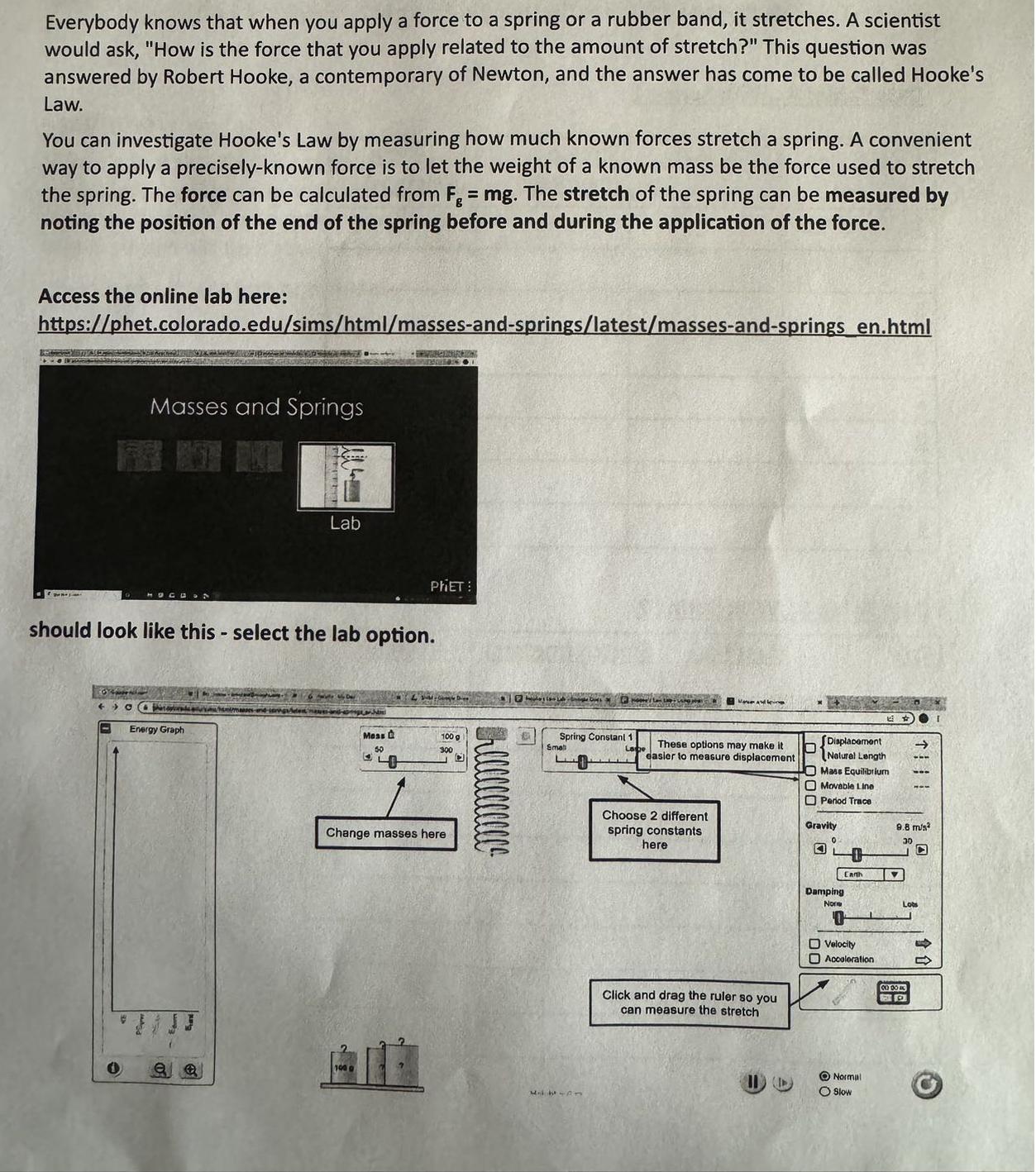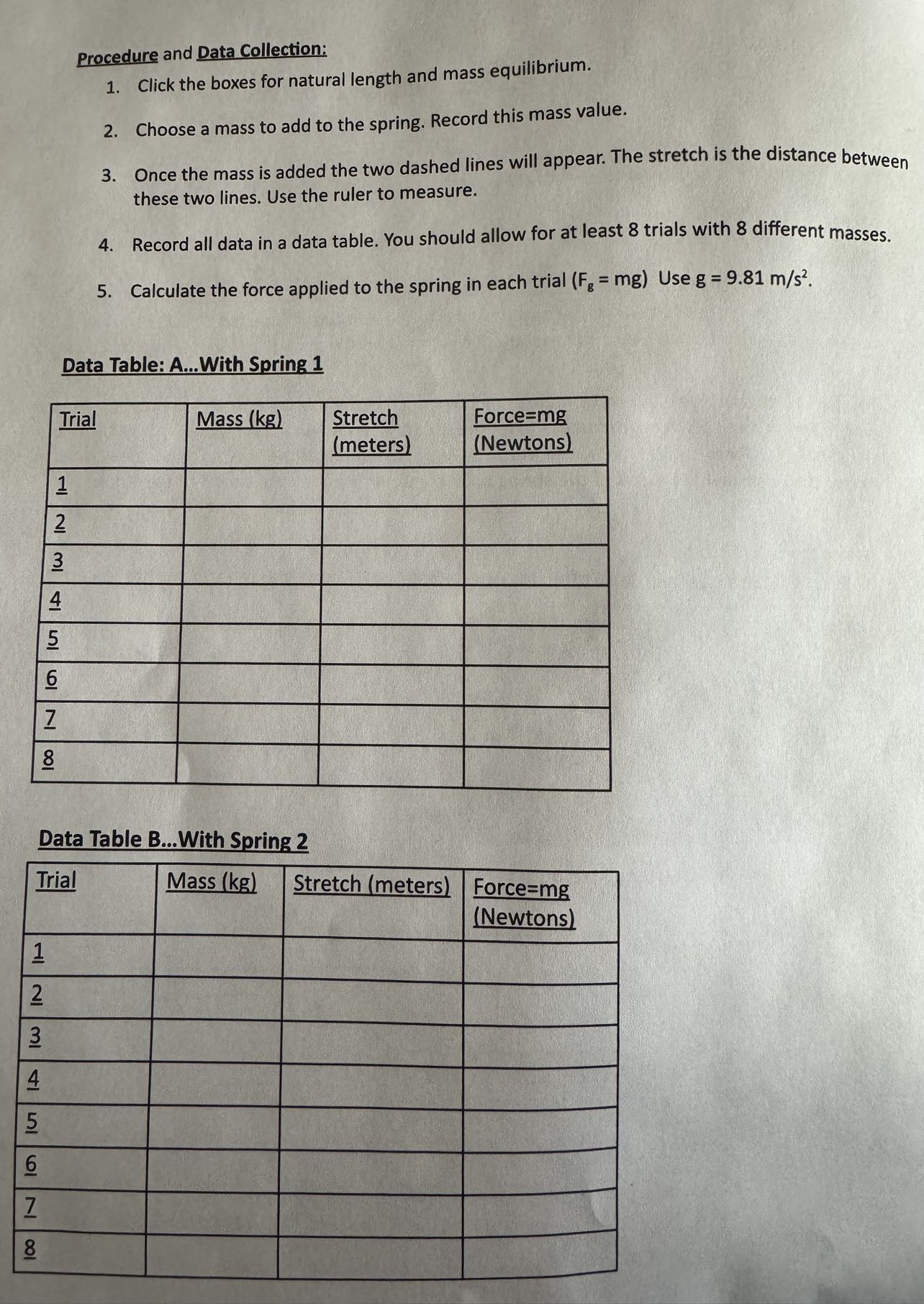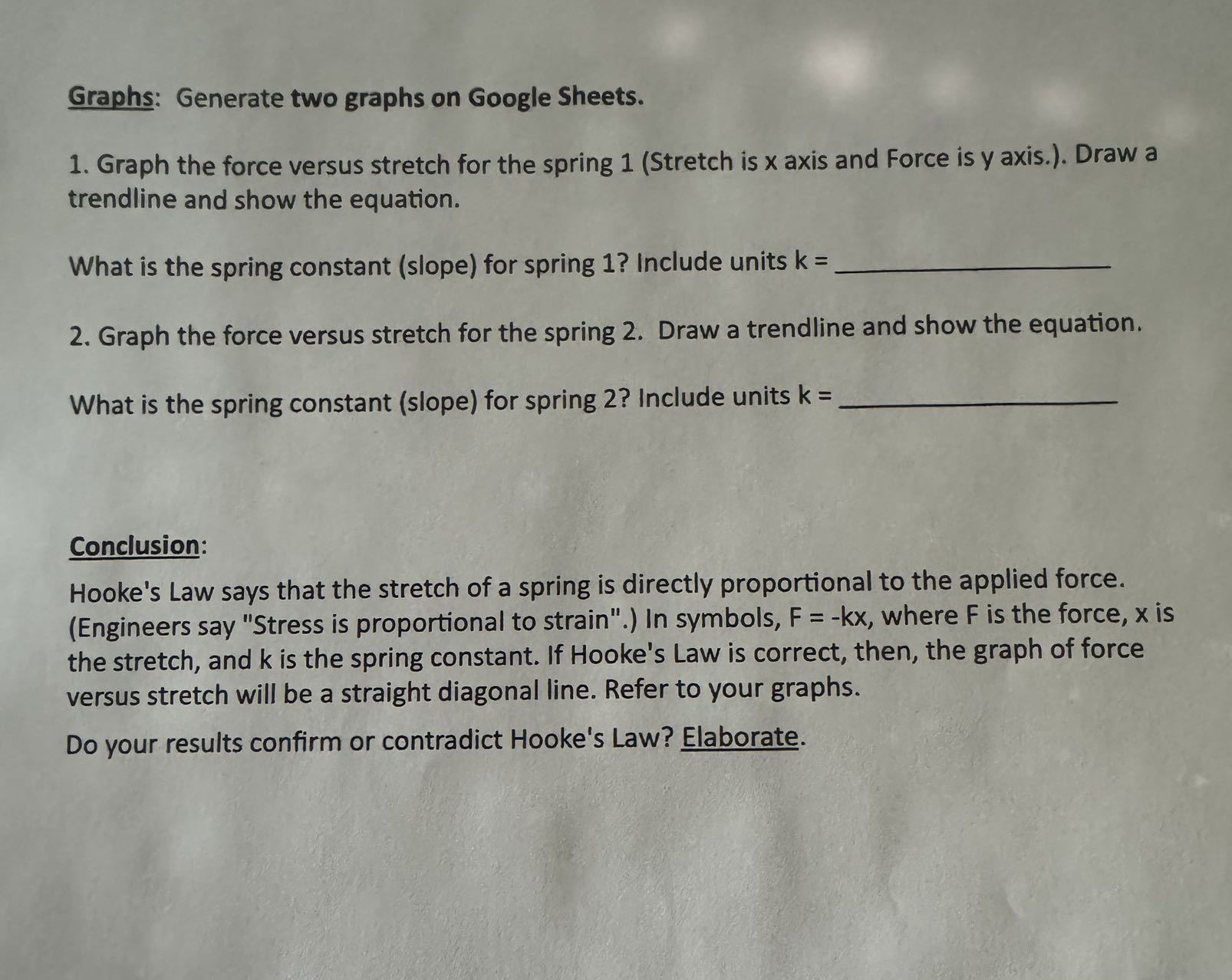Answered step by step
Verified Expert Solution
Question
1 Approved Answer
Everybody knows that when you apply a force to a spring or a rubber band, it stretches. A scientist would ask, How is the



Everybody knows that when you apply a force to a spring or a rubber band, it stretches. A scientist would ask, "How is the force that you apply related to the amount of stretch?" This question was answered by Robert Hooke, a contemporary of Newton, and the answer has come to be called Hooke's Law. You can investigate Hooke's Law by measuring how much known forces stretch a spring. A convenient way to apply a precisely-known force is to let the weight of a known mass be the force used to stretch the spring. The force can be calculated from F = mg. The stretch of the spring can be measured by noting the position of the end of the spring before and during the application of the force. Access the online lab here: https://phet.colorado.edu/sims/html/masses-and-springs/latest/masses-and-springs_en.html CRAFT Masses and Springs Lab PHET: should look like this - select the lab option. 0 Energy Graph Mess 100 g Change masses here a c c c c c a ac e c x+ Spring Constant 1 Smal These options may make it easier to measure displacement Choose 2 different spring constants Displacement Natural Length Mass Equilibrium Movable Line Period Trace Gravity -> 9.8 m/s here Click and drag the ruler so you can measure the stretch Damping None Earth 00, Velocity Acceleration Normal Slow A Lots Procedure and Data Collection: 1. Click the boxes for natural length and mass equilibrium. 2. Choose a mass to add to the spring. Record this mass value. 3. Once the mass is added the two dashed lines will appear. The stretch is the distance between these two lines. Use the ruler to measure. 4. Record all data in a data table. You should allow for at least 8 trials with 8 different masses. 5. Calculate the force applied to the spring in each trial (F = mg) Use g = 9.81 m/s. Data Table: A...With Spring 1 Trial 1 2 3 47 51 19 7 8 100 Mass (kg) Stretch (meters) Force=mg (Newtons) Data Table B...With Spring 2 Trial Mass (kg) Stretch (meters) Force=mg (Newtons) 1 2 47 51 61 N 100 8 Graphs: Generate two graphs on Google Sheets. 1. Graph the force versus stretch for the spring 1 (Stretch is x axis and Force is y axis.). Draw a trendline and show the equation. What is the spring constant (slope) for spring 1? Include units k = 2. Graph the force versus stretch for the spring 2. Draw a trendline and show the equation. What is the spring constant (slope) for spring 2? Include units k = Conclusion: Hooke's Law says that the stretch of a spring is directly proportional to the applied force. (Engineers say "Stress is proportional to strain".) In symbols, F = -kx, where F is the force, x is the stretch, and k is the spring constant. If Hooke's Law is correct, then, the graph of force versus stretch will be a straight diagonal line. Refer to your graphs. Do your results confirm or contradict Hooke's Law? Elaborate.
Step by Step Solution
There are 3 Steps involved in it
Step: 1

Get Instant Access to Expert-Tailored Solutions
See step-by-step solutions with expert insights and AI powered tools for academic success
Step: 2

Step: 3

Ace Your Homework with AI
Get the answers you need in no time with our AI-driven, step-by-step assistance
Get Started


